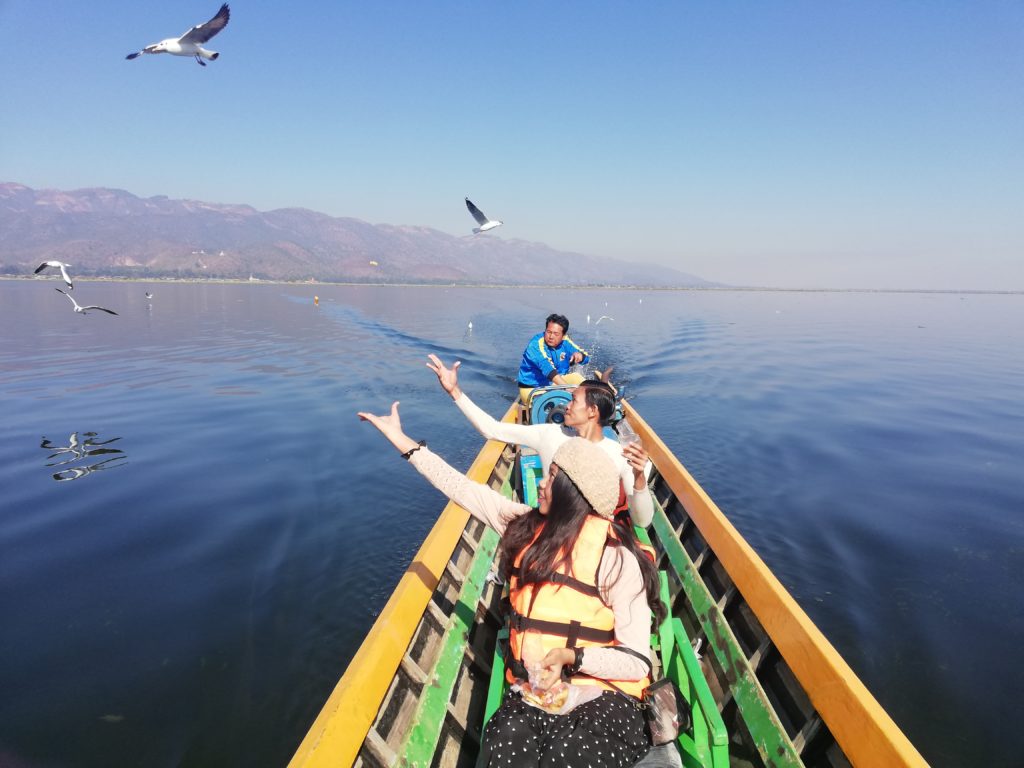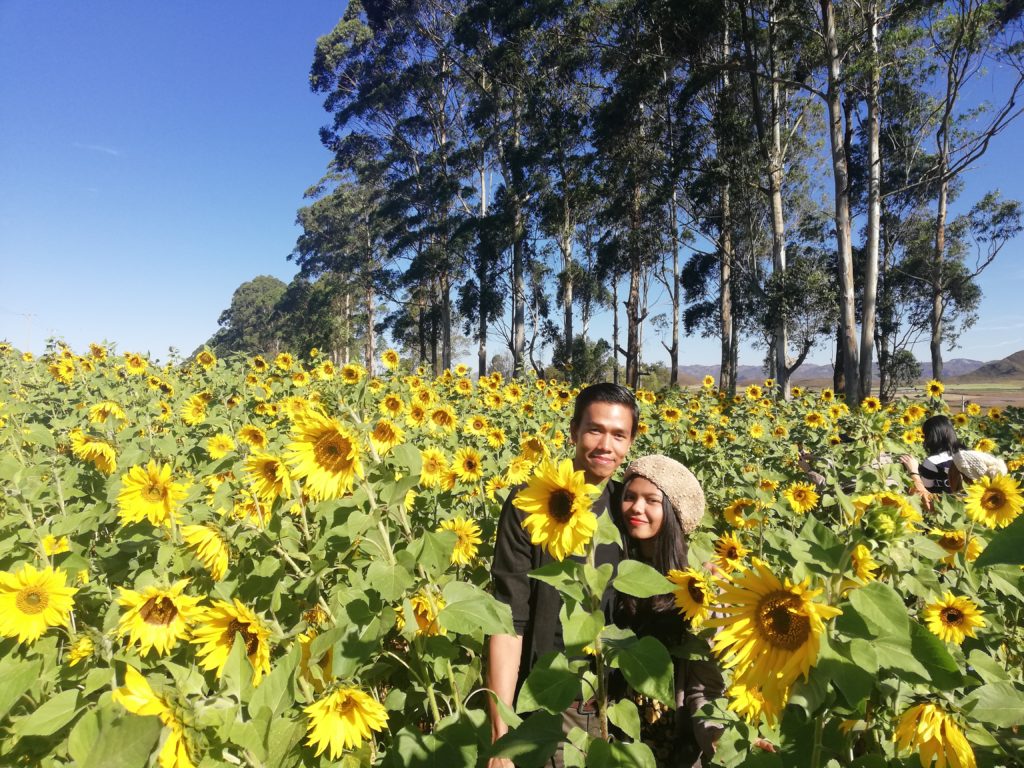| Duration 6 Days | Price On Request |
| Tour Set Couple Travel | Tour Guide English Speaking |
| Tour Size Small Group | Tour Type Couple |
Taking part in this Explore Kalaw & Inle trip, you will be mesmerized by the charming town of Kalaw and the breathtaking scenery around the marvelous Inle Lake home to the famous one-leg rowers.

Inle Lake is set in the heart of the vast Shan State and ringed by hazy mountain ranges. The ambience with the shallow waters of the lake is one of Myanmar’s most magnificent scenic and cultural attractions. The hills surrounding the lake are a melting pot of culture and are inhabited by over 30 ethnic groups. Of these, the Inthar, are perhaps the best known.
Kalaw is about 50km away from Inle Lake and becoming a favourite vacation hotspot for both foreign and local tourist in the recent years. The treks from Kalaw to Inle Lake are the most popular activities among the nature and soft adventure lovers. The treks start slowly elevating towards the villages which are situated in the high altitude. When in Kalaw or during treks, one can enjoy the hearty and nourishing delicacies. Kalaw market is one of the well-known five day rotating markets which full with local food, vegetables, fruits, Shan style clothing, Shan tote bags, etc. The local ethnic people are the sight to be seen and the heart of the market with their strong presence.
Start your first day in Yangon by heading over to the downtown and the ancient octagonal-shaped Sule Paya located in the very centre of Yangon. It is surrounded by the busy streets and colonial buildings such as the Supreme Court and Yangon City Hall.
Continue to the Botahtaung Pagoda close to the Yangon Jetty. There is a sort of mirrored maze inside the stupa, with glass showcases containing many of the ancient relics.
Stop by a street café to take a taste of the delicious local Shan noodle dish accompanied with some spring rolls and Shan tofu for filling lunch.
Afternoon visit is the vibrant Bogyoke (Scott) Market which has the largest selection of Burmese handicrafts.
In the evening, visit the Shwedagon Pagoda, the 'heart' of Buddhists in Myanmar. The Pagoda is believed to be 2,600 years old and there are always crowed with many people praying and making offerings at Shwedagon especially on Full Moon days and religious days.
Start with a sightseeing by boat on the beautiful Inle Lake which is home to Inthar national race, many of whom live in stilted houses built over the water. Inle Lake is the second largest lake in Myanmar, stretches 11 miles (17.7 km). It is mesmerizing to see the leg rowers casting over the conical fishing net on the glistening lake while balancing on one leg on the wooden boat. The other leg is wrapped around the long single paddle which tucked neatly under the arm. Observing and photographing with awe at the leg-rowers putting on the right amount of pressure on the free leg, while their other leg steers, turns and uses the paddle to slow the boat down is always occurred.
The boat trip will continue along the tangles of the water hyacinth leaves and floating gardens.
The unique floating islands are tethered by the bundles of weeds, mud and bamboo poles. Inthars living on the lake harvest three crops of tomatoes, eggplants, other fruits and vegetables every year. They sell their produce which grow on these highly-nutritious gardens at the 5-day markets in towns and villages around the lake.
Next stop is to see Lotus Silk Weaving at one of the lotus, silk and cotton hand-weaving shops. Kyaing Khan and In Paw Khone villages are the main ones which have many weaving shops. The shops have a live demonstration of the lotus weaving process by using all hands and traditional tools. The first step is cutting lotus stems into small pieces and extracting silky filament. The second step is to produce a single fine thread by moistening the fibers and rolling them together. About 4000 lotus stems to be used and a day spent for one scarf. The next step is spinning the fresh lotus threads into reels by a hand-made wheel. Finally the scarfs, bags and clothes are made by using the old hand looms.
Stop by Inthar Heritage House for delicious Inthar lunch. The restaurant serves up authentic Inthar food on a veranda overlooking the lush Shan hills. Fish, turmeric and the rice powder are the main players of traditional Inthar cuisine. At Inthar Heritage House, the fresh vegetables are gown in their own organic garden. There are interesting local dish such as banana flower salad with lime and basil, or spring onion fritters. Stuffed Fish or rice power with spring onion wraps are very popular dishes. The fish is marinated with salt, lemon juice and turmeric; and stuffed with fried ginger, lemongrass, tomato, chilli, garlic and coriander. After being tied with strings and fried, the famous Inle stuffed fish dish is ready to savour.
After lunch, it is the bonding time with the Burmese Cats from Inthar Heritage. The pure-bred cats are brought back from UK and Australia to stay back in their original land. Traditional Inthar art, culture and architecture will be learned through touring around the house, library and souvenir shop. The heritage house is designed and built by the inspiration of Inthar culture.
In the afternoon, visit the very famous Phaung Daw Oo Pagoda which is one of the sacred sites in Shan region. Seeing the huge religious building with the golden stupa on top glinted in the sunlight from afar is an amazing sentiment. Inside the center of the pagoda building is a decorative shrine with a stand, on which the five ancient golden Buddhas are kept. The Buddha images are over 800 year old and have been applied with so many gold leaves by the Buddhist devotees daily that it is impossible to see their original structure. The large golden barge, a replica of a royal barge of King Alung Sithu is kept next to the Paung Daw Oo Pagoda. The barge is used annually during the Phaung Daw Oo Pagoda festival to carry the four of the Buddhas and tour around over twenty villages towed by over fifty long boats, each with around forty leg-rowers, dancers and music performers.
The last stop for the day is the teak Nga Phe Kyaung (Cat jumping) Monastery, one of the oldest monasteries on the lake in which numerous huge ancient Buddha images are kept. The cats will still be found in the monastery but they no longer jump or entertain the visitors.
Start sightseeing one of the local five-day markets which rotate among the villages in regular order - one village becomes the host of the market every 5th day. Exploring these markets will lend insight into the life-style of the ethnic Pa-O, Danu and Inthar inhabitants, who come to these markets to tout their wares, from silverwares, jewllery, cotton scarfs, Shan style trousers and bags or sell their fresh produce grown by Inthar. You will be able to observe the customs and traditional dress of these various groups, a colourful sight to behold. Nampan and Indein five-day markets are the well-known ones.
Then proceed to the Indein pagoda complex - an archaeological site where hundreds of Shan-style pagoda ruins are situated on a sloping hill, some entirely hidden by vigorous bush and foliage and some of the pagodas dating back to 17th and 18th centuries. True to the meaning of Indein in Burmese which is shallow lake, the village is situated in the shallow part of the lake and some distance away from the main route.
Behind the Nyaung Oak (a group of Banyan trees) village, the first set of crumbling ancient pagodas are found. The stucco carvings of mythical animals, celestial beings and chinthe (mythical lion) can still be seen but mainly in destruction. After climbing along the stairway from Nyaung Oak, there is a second set of ruined ancient pagodas of Shwe Indein. The passageway is one of the longest in the whole Myanmar and filled with stalls selling handicrafts. The view from the top of Shwe Indein Pagoda is breathtaking.
Start a road trip to a small pretty town of Kalaw, sitting at 1300 metres above sea level on the western edge of the Shan Hills was a popular hill station during British colonial rule. Today it’s a popular place for those looking to hike through the scenic surrounding hills along trails that pass through hill tribe villages. In the town itself many of the colonial houses remain, surrounded by their pretty gardens. There’s a vibrant market rotating on a five-day cycle that is awash with colours as members of the Palaung hill tribe flock to the town from their surrounding villages. Visit the local market and walk up the hill to see the Old Catholic Church, Kalaw Railway Station (built in 1918), the colonial buildings on East Circular Road and the Nee Paya Buddha image, woven with the bamboo strips and covered with cloth dipped in lacquer. Visit Kalaw Shwe Umin Paya with caves.
Fly to Yangon. In the afternoon, start your visit to Dala located across the river from Yangon. Take a 10-minute ferry ride at the Pansodan Pier in downtown Yangon which is very close to Sule Paya. Local commuters on the ferry are interesting sights to be seen. In Dala, take trishaw ride to explore the markets, teashops, local houses, farms and pagodas. It is one of the best trips around Yangon to experience the local ways of lives.
Say goodbye to your guide to depart Yangon. Take sweet memories of travelling in Myanmar back home. En Route will always make the unforgettable travel experience that lasts a life time.
Lovely town of Kalaw is one of the most popular places for couples. Lots of moments will be cherished and sweet memories will be created here. The atmosphere of Kalaw is inviting those who is from the other warmer parts of Myanmar or who has been travelling throughout Myanmar. You will be greeted by the cool mountain air, the smell of pine forests and the chill ambiance. Main attraction of Kalaw is trekking through the fields of yellow flowers and fruits. You will have a chance to interact up close and personal with the local people while trekking through the villages.

Enquire to tailor your own private tour to discover Myanmar which is a mixed of past and modern world.










